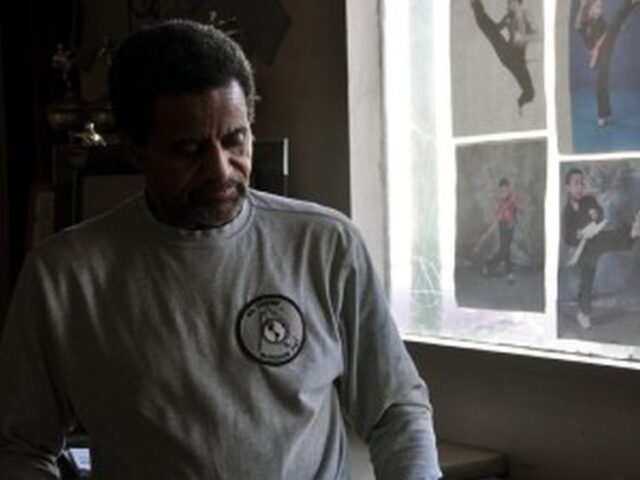
Bill Owens says he’ll never forget what he saw.
He was teaching at Cascos Martial Arts, a karate studio at 74th Avenue and MacArthur Boulevard in East Oakland that he’s run with his wife for 40 years when he heard a series of loud pops.
He thought someone had hit the front window glass or set off firecrackers. Startled and curious, Owens went outside to see where the noise was coming from.
Across the street, he saw two Oakland Police motorcycles sitting idle with their red and blue emergency lights blinking, but he didn’t see the officers. Then he looked down and caught a sight that still haunts him today: Sgt. Mark Dunakin and Officer John Hege, laying mortally wounded on the pavement.
Bill’s wife Mary also heard the shots and was the first person on the scene rendering aid to the fallen officers. She said both looked dead.“My authority figure is on the ground,” Bill recalled. “It was really rough and hard to see.”
“It was the most horrible thing I’ve ever seen in my life,” she said. “It was inconceivable. I thought I was in a movie.”
Mary started crying. She yelled for her husband, ran back into the studio and called 911.
The healing process has been slow and difficult for both Bill and Mary, who became first responders on the deadliest day in the history of the Oakland Police Department just by going to work on March 21, 2009.
The sight of the bloodied officers and the shell-shock of living and working at the epicenter of the tragedy scarred the couple.
Only recently did Mary go for a walk around the neighborhood again, something she wasn’t able to do for months following the shooting.
Business at the karate studio dropped dramatically following the shootings. It was already suffering from the down economy, but its proximity to the scene of the police slayings drove even more students away.
“People are a bit afraid to come into the area,” Mary said.
Bill tries to make light of the situation: when callers become wary after learning the location of his studio, he jokes over the phone, telling them “lightning never strikes in the same place twice!”
A ‘routine’ traffic stop
The darkest day in the history of the Oakland Police Department began with a routine traffic stop on a warm Saturday afternoon in early spring. It was just after 1 p.m. on March 21, 2009 when Oakland Police Sgt. Mark Dunakin and Officer John Hege pulled over a burgundy Buick sedan for a traffic violation.
They got off their motorcycles, walked up to the driver’s side window together and asked the driver, Lovelle Mixon, for his driver’s license and vehicle registration. The officers were about to run a check on the license when Mixon — a wanted parolee — unexpectedly leaned out of his car window and shot each officer in the head with a semiautomatic handgun. When Dunakin and Hege fell to the ground, Mixon got out of the car and fired more shots at each of them before fleeing on foot down 74th Avenue into an apartment building.
More than 100 cops from Oakland Police and surrounding police agencies raced to the shooting scene. Neighbors described scenes of bedlam as armed police officers combed through the neighborhood in search of Mixon. Nearly two hours later, an Oakland Police SWAT team entered the ground-floor apartment where police informants and eyewitnesses had reported Mixon was hiding. One of Mixon’s sisters lived there with her daughter, but neither was home at the time.






